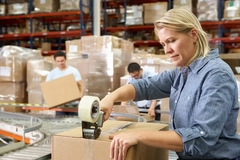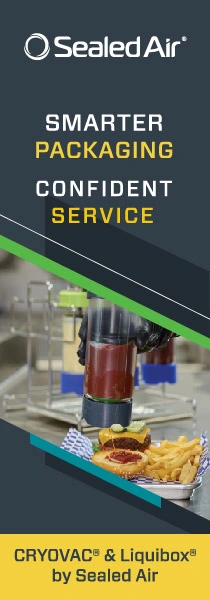MSU School of Packaging expands to advance research in next-generation packaging
The Michigan State University (MSU) School of Packaging is planning a US$25 million expansion to double the size of its building, increase research capacity and accommodate more faculty and graduate students.
The US institution completed a renovation supported by donations totaling over US$10 million in April 2023. The project modernized facilities to enhance learning and research capabilities.
Laura Bix, MSU School of Packaging interim director, tells Packaging Insights: “A key to remaining cutting edge is that we maintain close ties with our alumni base and our industry stakeholders to stay informed of new developments happening with technology and application of the same.”
“Their input helps to inform the competencies that our students of both today and tomorrow will need. Additionally, we hire faculty from a breadth of disciplines that continue to bring novel perspectives and technology transfers from fields adjacent to ours.”
Advancing food packaging
The MSU School of Packaging is home to faculty members dedicated to advancing sustainable packaging solutions that address global challenges. Among them, Dr. Eva Almenar, a professor and expert in food packaging, collaborates with researchers worldwide to develop innovative packaging systems that extend the shelf life, quality and safety of fresh produce.
Dr. Almenar’s research portfolio includes 15 industry-funded projects focused on novel packaging solutions to enhance food preservation. Her project, supported by the Michigan Soybean Committee, explores the potential of using soy oil byproducts to create food packaging materials.
Beyond her lab, Almenar’s outreach includes training first- and next-generation Latino/a farmers in Michigan, US through the Great Lakes Latina/o Farmers Program and contributing to the WorldTAP International Food Safety short course.
 Dr. Almenar with research associate Argus da Rocha Neto and PhD student Haile Duguma.Her international projects span continents, from “training the trainer” in India to co-leading a project performed in Russia and the US to improve the handling and packaging of fresh frozen legs quarters of turkey and chicken for the global market.
Dr. Almenar with research associate Argus da Rocha Neto and PhD student Haile Duguma.Her international projects span continents, from “training the trainer” in India to co-leading a project performed in Russia and the US to improve the handling and packaging of fresh frozen legs quarters of turkey and chicken for the global market.
Improving sustainability
Professor Rafael Auras, the Amcor Endowed Chair in Packaging Sustainability, leads research to make plastic packaging more recyclable and sustainable, aligning with global efforts to reduce plastic waste. Auras’ work extends to collaborative projects with NASA, where his team is exploring bio-based, compostable materials to preserve food quality.
Assistant professor Qiang Yang is at the forefront of research into cellulosic materials, such as low-cost films, foams and aerogels. Supported by grants from the National Science Foundation and the US Department of Agriculture’s (USDA) National Institute of Food and Agriculture, Yang’s work seeks to improve the efficiency of separating cellulosic fibers from wood.
His team is also developing lignin-based coatings, cellulose nanocrystal-based inks and technologies to convert non-recyclable packaging materials into fuels and chemicals.
Professor and associate director Laurent Matuana is renowned for his contributions to wood-plastic composite technologies, holding five US patents in the field.
Matuana’s current USDA-funded research focuses on developing alternatives to high barrier multilayer plastic packaging, aiming for easier end-of-life recyclability. His team is leveraging cellulose nanomaterials to create packaging that serve as effective barriers against water and oxygen.
Bix explains that packaging, by its very nature, has a highly visible presence in waste streams and often becomes an easy target in discussions that frequently overlook the nuances and complexities of the differences packaging makes.
“We are working to innovate materials and processes that are less environmentally impactful. We are working to objectively evaluate and characterize the impact that decisions make on the planet and its people and are working to help communicate the complete and sometimes complicated truth about systemic impacts and benefits that packaging can have.”
“As such, a central focus of our strategies for the future will include investment in areas that support science aimed at improving tomorrow utilizing packaging as a vehicle to do so,” she concludes.











